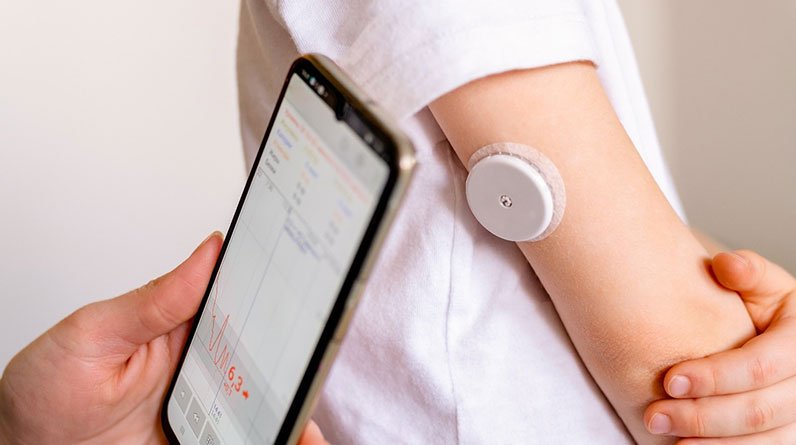
AI and Infectious Diseases
Infectious diseases have been a persistent threat to public health throughout history, and the development of drug-resistant pathogens has further complicated treatment strategies.
Artificial intelligence (AI) has emerged as a powerful tool in the battle against infectious diseases, offering unique capabilities to analyze genetic data and microscopic imaging. This AI-driven approach not only enhances the identification of specific infections but also aids in predicting medication resistance, paving the way for more effective treatments and containment strategies.
By analyzing the genetic material of pathogens, AI algorithms can swiftly and accurately identify specific infections. This level of precision in diagnosis allows for targeted treatment recommendations, ensuring that patients receive the most effective therapies promptly.
For example, in the case of bacterial infections, AI can identify the pathogen’s genetic markers to determine the appropriate antibiotic regimen. This not only improves patient outcomes but also helps curb the unnecessary use of broad-spectrum antibiotics, which contributes greatly to the problem of antibiotic resistance.
One of the most critical challenges in infectious disease management is the emergence of medication resistance. Pathogens can adapt and develop resistance to antimicrobial drugs, rendering once-effective treatments ineffective. AI plays a pivotal role in predicting medication resistance by analyzing vast datasets of genetic information from pathogens and tracking their evolutionary patterns.
These predictive models help healthcare providers anticipate which drugs are likely to be less effective against specific strains, enabling them to choose alternative treatments or adjust dosage regimens. This is crucial in preventing the spread of resistant infections, preserving the effectiveness of existing medications, and guiding the development of new therapeutic strategies.
How AI is Used for Vaccine Design
The development of vaccines has long been a cornerstone in our fight against infectious diseases, and in recent years, AI has become an invaluable ally in expediting vaccine design and enhancing our understanding of viruses.
AI’s contributions extend to studying virus mutations and predicting the immune response to antigens, revolutionizing the way we develop vaccines.
AI assists in vaccine creation by studying the details of DNA and the way infectious substances bind to proteins. It then uses this data to suggest results such as how well the vaccine activates the immune system, how effective the vaccine is, and how well it can be turned into a real-world treatment.
Studying Virus Mutations
Virus mutations are a natural and often rapid occurrence, enabling pathogens to adapt to changing environments and host defenses. Keeping pace with these mutations is crucial for vaccine developers.
AI can be used to analyze vast datasets of viral genetic information, identifying mutations and predicting how they might affect the virus’s behavior. This predictive capability is particularly vital in the context of rapidly evolving viruses, such as influenza or HIV.
By anticipating potential mutations, AI assists in designing vaccines that remain effective against a broader spectrum of viral strains. This not only bolsters the longevity of vaccine protection but also reduces the need for frequent vaccine updates.
Antigen Discovery and Immune Response Prediction
Antigens, the molecular components of pathogens that trigger an immune response, are central to vaccine development. AI-driven algorithms excel in predicting potential antigens by analyzing the genetic makeup of viruses.
These predictions are crucial in identifying the most effective antigen candidates for vaccine development. AI can model how the immune system is likely to respond to these antigens, allowing researchers to fine-tune vaccine formulations for optimal immune activation.
This level of precision enables the creation of vaccines that induce robust and long-lasting immune responses while minimizing side effects.
AI and Infection Surveillance
Infection surveillance is a vital component of public health, as it enables early detection, timely response, and prevention of outbreaks.
In recent years, AI has revolutionized infection surveillance, offering unprecedented capabilities in aggregating data, predicting outbreaks, and implementing models to prevent the spread of infectious diseases.
Aggregation of Data
AI plays a pivotal role in the aggregation of data from various sources, including electronic medical records, laboratory reports, and real-time patient data. By seamlessly integrating these diverse datasets, AI-driven systems create a comprehensive and up-to-date picture of infection trends.
This data aggregation allows healthcare providers and public health officials to monitor the prevalence of infections, identify emerging hotspots, and track the spread of diseases more accurately.
For instance, the Electronic Data Surveillance-Hospital Acquired Transmissions (EDS-HAT) study demonstrated the power of real-time machine learning in infection surveillance. By combining electronic medical records with whole-genome sequencing, this approach prevented up to 40% of hospital-borne infections in multiple locations.
It also enabled the identification of similar infections across different locations and time periods, offering valuable insights for intervention strategies. The integration of AI and data aggregation not only enhances patient safety but also yields substantial cost savings for healthcare systems.
Prediction of Outbreaks
AI’s predictive capabilities are instrumental in forecasting infectious disease outbreaks. Machine learning algorithms analyze historical data, environmental factors, and population movements to identify patterns that precede outbreaks.
This early warning system allows public health agencies to allocate resources, deploy healthcare professionals, and implement preventive measures proactively. AI’s predictive power was notably demonstrated in the early detection of the COVID-19 pandemic, where models accurately anticipated the global spread of the virus, guiding governments and healthcare systems in their response efforts.
The ability to predict outbreaks not only saves lives but also minimizes the economic and social disruptions associated with infectious diseases.
Models to Prevent Outbreaks
AI-driven models are at the forefront of preventing infectious disease outbreaks. These models use real-time data to identify high-risk areas and populations, enabling the implementation of targeted interventions.
For example, during a flu outbreak, AI can identify specific geographic regions with a high prevalence of cases and recommend vaccination campaigns in those areas. Additionally, AI-powered models help healthcare facilities and public health agencies implement infection control strategies.
By analyzing patient data, including infection rates and antimicrobial resistance patterns, AI can guide healthcare providers in selecting the most effective treatment regimens, thereby preventing the escalation of outbreaks within healthcare settings.
Final Thoughts
AI’s integration into infectious disease management, vaccine design, and infection surveillance represents a tremendous advance in the ability to respond to infectious diseases.
As we continue to face emerging infectious threats, AI remains an invaluable tool in safeguarding public health, improving patient safety, and saving lives.


